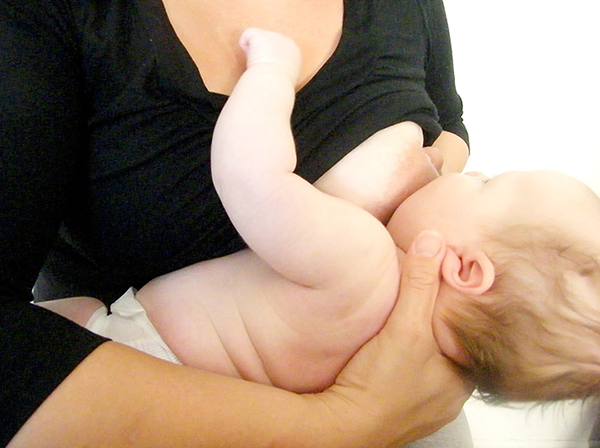The cross-cradle hold

It's often easier to start breastfeeding by holding your baby in the cross-cradle position.
Your baby’s head is supported with your hand at the base of their neck. The position of your hand is important - your baby needs to be able to tilt their head back slightly. Make sure that your arm or hand is not behind your baby's head, or they might not be able to tilt it back. Your other hand is supporting your breast.
The cradle hold

Once baby is latched well, you can change to a cradle hold, which might be more comfortable.
Release your hold on your breast (unless it is very heavy and full, in which case you may need to support it during the feed - see the underarm/rugby hold below) and move your arm gently around your baby.
The side-lying position

Using a lying-down position can be useful if you’ve had a caesarean.
The underarm, rugby or football hold

The underarm or rugby hold can be useful if you've had a caesarian, or if your breasts are heavy, as the weight is partially supported by your baby.
Acknowledgements
The first three images on this page are reproduced from the Ministry of Health and Mama Aroha.
The fourth image is a KidsHealth image.
